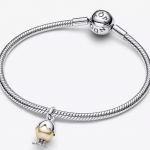In today’s fast-paced world, our wardrobe needs to keep up with the changing seasons. A well-planned seasonal wardrobe transition is not only a practical necessity but also a chance to infuse your personal style into each season. In this article, we will guide you through the process of transitioning your wardrobe effectively and sustainably.
The Importance of Seasonal Wardrobe Transition
Assessing Your Current Wardrobe
Before diving into a wardrobe switch-up, it’s crucial to take stock of your current clothing collection. This step will help you identify what you have, what you need, and what can be repurposed.
Decluttering and Organizing
Start by decluttering your closet. Remove items you haven’t worn in the past year and set them aside for donation or sale. Organize your remaining clothing neatly, making it easier to access your seasonal pieces.
Building Your Seasonal Wardrobe
Now, let’s delve into building your seasonal wardrobe, beginning with the essentials for each season.

Essential Pieces for Each Season
- Spring: Lightweight jackets, floral dresses, and transitional footwear.
- Summer: Breathable fabrics, swimwear, and sun hats.
- Fall: Cozy sweaters, versatile boots, and layering options.
- Winter: Warm coats, scarves, and thermal accessories.
Mixing and Matching
The key to a versatile wardrobe is mixing and matching your clothing items. Create outfits that can transition from one season to another by layering and accessorizing strategically.
Storing Off-Season Clothing
Properly storing off-season clothing is essential to maintain the quality and longevity of your garments.
Tips for Proper Storage
- Use vacuum-sealed bags to save space and protect your clothing.
- Store off-season shoes in boxes to prevent dust and damage.
- Hang delicate items to prevent wrinkles.
Transitioning Accessories
Your seasonal wardrobe transition isn’t complete without addressing accessories.
Accessory Swap
Swap out accessories like scarves, hats, and jewelry to match the season’s aesthetic and weather.
Shoe Selection
Choose footwear that complements the season. Sandals for summer, boots for winter, and versatile options for spring and fall.
Maintaining Your Seasonal Wardrobe
Once you’ve successfully transitioned your wardrobe, it’s important to maintain it.
Regular Inspection
Periodically check your clothing for signs of wear and tear. Repair or replace items as needed to keep your wardrobe in top condition.
Proper Cleaning
Follow care labels and cleaning instructions to ensure your garments stay fresh and vibrant throughout the season.
Sustainable Practices for Seasonal Switch-Up
Donate or Sell Unwanted Items
Instead of discarding unwanted clothing, consider donating or selling them. It’s an eco-friendly way to ensure your garments find new homes.

Reusing and Repurposing
Get creative with repurposing items. Turn old shirts into rags, and jeans into shorts, breathing new life into your wardrobe.
The Benefits of a Seasonal Wardrobe Transition
A well-executed seasonal wardrobe transition ensures you always look and feel your best, no matter the weather. It also reduces clutter, simplifies your clothing choices, and encourages sustainability.
Conclusion
Seasonal wardrobe transitions are not only about staying in style; they also contribute to a clutter-free and sustainable lifestyle. By assessing, organizing, and maintaining your wardrobe effectively, you can make each season a fashion statement. So, embrace the change and elevate your wardrobe game.
FAQs
How often should I switch up my seasonal wardrobe?
The frequency of wardrobe transitions depends on your local climate. In most places, twice a year is sufficient, but adjust as needed.
What are the must-have items for a fall wardrobe?
Essential fall items include cozy sweaters, boots, scarves, and versatile layering pieces.
Can I store my off-season clothing in a regular closet?
Yes, you can, but consider using storage solutions like vacuum-sealed bags or boxes to protect your clothing.
Are there any eco-friendly ways to transition my wardrobe?
Yes, consider donating or selling unwanted items and repurposing old clothing to reduce waste.
What’s the best way to organize my accessories for each season?
Store your seasonal accessories in labeled containers or drawers to easily switch them out as the seasons change.
 Vertel Jouw Verhaal met Pandora Moments: Ontdek de Betekenis Achter Elke Bedel
Vertel Jouw Verhaal met Pandora Moments: Ontdek de Betekenis Achter Elke Bedel  Lolelife Product Reviews: Perfect Choices for Health and Comfort
Lolelife Product Reviews: Perfect Choices for Health and Comfort  Runway Extravaganza: Highlights from Major Shows
Runway Extravaganza: Highlights from Major Shows  Gloves, Gloves, Gloves: A Touch of Elegance
Gloves, Gloves, Gloves: A Touch of Elegance  Accessorizing 101: Elevate Your Outfits
Accessorizing 101: Elevate Your Outfits  Stylish Hats and Caps: The Crowning Glory
Stylish Hats and Caps: The Crowning Glory  Shine Bright: Exploring the World of Fine Jewelry
Shine Bright: Exploring the World of Fine Jewelry 